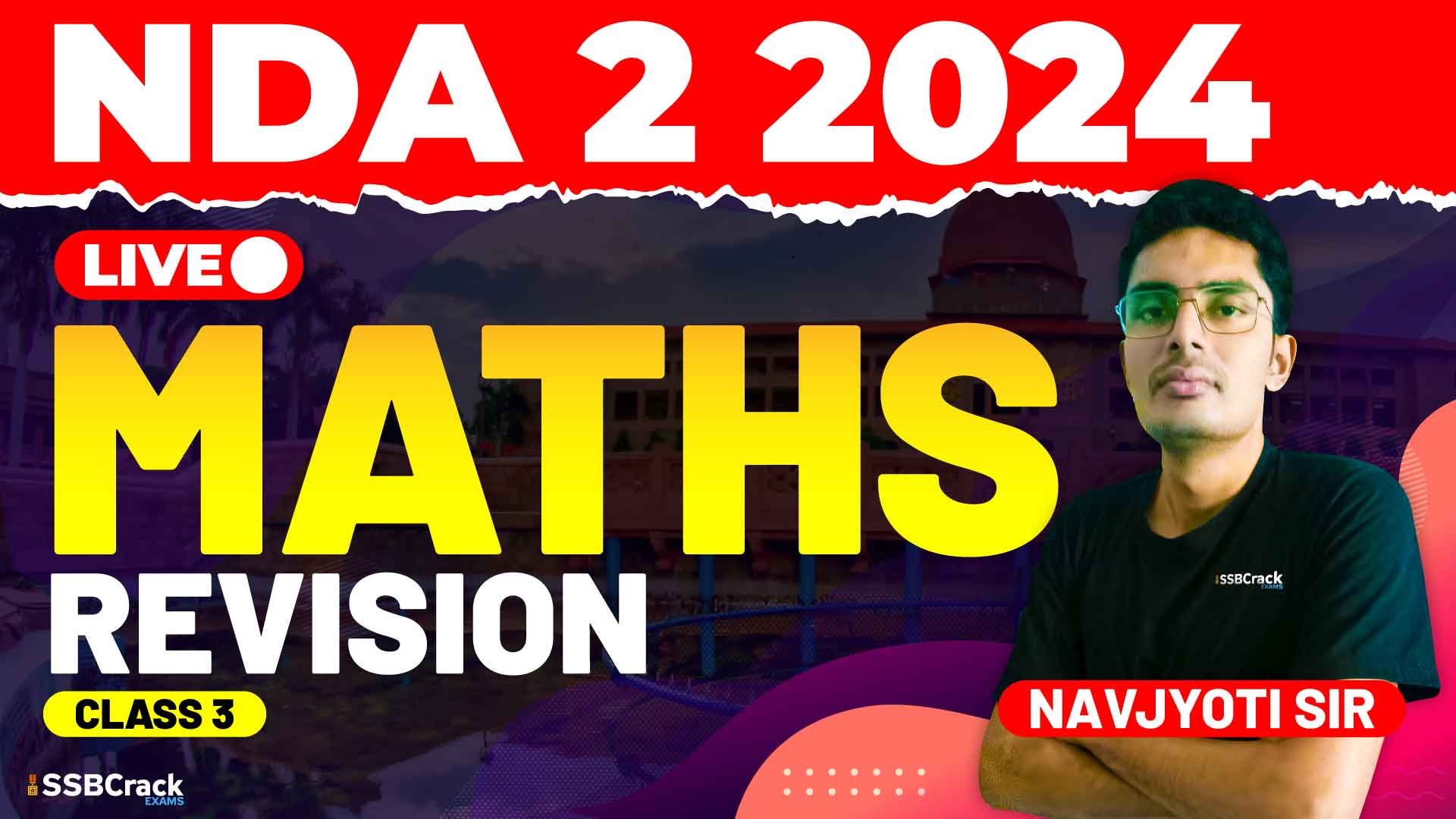Preparing for the National Defence Academy (NDA) Exam, particularly the Mathematics section of Paper-I, requires a deep understanding of various mathematical concepts and rigorous practice. Recently, a focused revision class dedicated to practicing multiple-choice questions (MCQs) was conducted on three crucial topics: Trigonometric Functions, Quadratic Equations, and Inequalities. In this article, I will share insights from this class, discuss the key concepts covered, and provide strategies to effectively tackle MCQs on these topics.
Trigonometric Functions
Trigonometry is a significant part of the NDA Mathematics syllabus, and mastering it can significantly boost your score. Here are the key concepts and strategies:
Key Concepts
- Basic Trigonometric Ratios: Understanding the fundamental ratios—sine, cosine, tangent, and their reciprocals (cosecant, secant, and cotangent).
- Trigonometric Identities: Familiarize yourself with basic identities such as Pythagorean identities, angle sum and difference identities, and double and half-angle identities.
- Graphs of Trigonometric Functions: Knowing the graphical representation of these functions helps in understanding their behavior and solving related problems.
- Inverse Trigonometric Functions: Understanding the properties and ranges of inverse trigonometric functions.
Strategies for MCQs on Trigonometric Functions
- Memorize Key Identities: Having a strong grasp of trigonometric identities is crucial. These identities often simplify complex problems and make solving them quicker.
- Practice Problem-Solving: Regular practice with a variety of problems will help you recognize patterns and apply the appropriate identities quickly.
- Use Graphs for Visualization: Visualizing trigonometric functions can aid in understanding their properties and solving problems involving these functions.
- Break Down Complex Problems: When faced with a complex problem, break it down into simpler parts and solve step-by-step.
Quadratic Equations
Quadratic equations are a fundamental concept in algebra and frequently appear in the NDA exam. Here’s what you need to focus on:
Key Concepts
- Standard Form: Recognize and work with the standard form of a quadratic equation (ax² + bx + c = 0).
- Roots of Quadratic Equations: Understand the methods to find roots, including factoring, completing the square, and using the quadratic formula.
- Nature of Roots: Learn to determine the nature of the roots (real and distinct, real and equal, or complex) using the discriminant.
- Sum and Product of Roots: Know the relationships between the coefficients of the equation and the sum and product of its roots.
Strategies for MCQs on Quadratic Equations
- Practice Various Methods: Be comfortable with different methods of solving quadratic equations. Sometimes one method is more straightforward than another, depending on the problem.
- Understand Discriminant: The discriminant is key in determining the nature of the roots. Practice problems that require you to evaluate and interpret the discriminant.
- Focus on Application: Many problems involve applying quadratic equations in different contexts (geometry, physics, etc.). Practice these applications.
- Review Key Properties: Regularly review and memorize key properties related to the roots and coefficients of quadratic equations.
Inequalities
Inequalities are essential for understanding relationships between expressions and solving various mathematical problems.
Key Concepts
- Types of Inequalities: Be familiar with linear inequalities, quadratic inequalities, and inequalities involving absolute values.
- Graphical Representation: Understand how to represent inequalities on a number line and interpret these graphs.
- Solving Inequalities: Learn methods for solving different types of inequalities, including interval notation and analyzing the sign of expressions.
Strategies for MCQs on Inequalities
- Practice Graphing: Visual representation can often make understanding and solving inequalities easier.
- Interval Notation: Get comfortable with interval notation as it is frequently used in solutions and answers.
- Work Through Examples: Practice solving a variety of inequalities to understand the steps and methods thoroughly.
- Understand Critical Points: Identify critical points where the inequality changes and use these to determine the solution set.
General Strategies for Tackling MCQs
- Time Management: Allocate your time wisely. Avoid spending too much time on any single question. If you’re stuck, move on and return to it later.
- Consistent Practice: Regular practice is crucial. Use previous years’ question papers and sample MCQs to familiarize yourself with the pattern and difficulty level.
- Conceptual Clarity: Ensure you have a strong understanding of fundamental concepts. Rote learning can lead to confusion during the exam.
- Elimination Technique: Use the process of elimination on MCQs. Narrow down options by eliminating clearly incorrect answers first.
- Mock Tests: Take regular mock tests under timed conditions to build confidence and improve speed.
- Review Formulas and Identities: Keep a list of essential formulas and identities for quick revision, especially for topics like trigonometry and quadratic equations.
Conclusion
Preparing for the NDA exam requires a disciplined approach, regular practice, and a thorough understanding of fundamental concepts. The revision class on Trigonometric Functions, Quadratic Equations, and Inequalities provided valuable insights into solving MCQs efficiently. By focusing on these strategies and practicing diligently, you can enhance your problem-solving skills and improve your performance in the exam.
Remember, consistency and perseverance are key. Keep practicing, stay focused, and approach each topic with a clear strategy. Good luck with your NDA exam preparation!


















